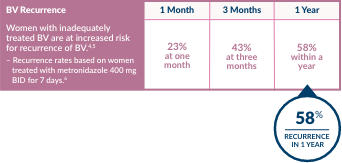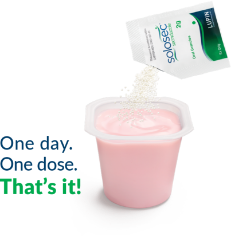LUPIN'S PLEDGE ON PRIVACY ("PLEDGE")
You care about the protection of your Personal Data – so do we. At Lupin Inc. ("Lupin"),
we endeavor to ensure and maintain the privacy and data security of all Personal Data
collected or retrieved by your use, as a visitor, of our websites. The term "Personal Data"
as used throughout this Pledge refers to any information by which you may be personally
identified, such as name, postal address, email address, telephone number, or any other
identified by which you may be contacted, identified, located or tracked.
This Pledge applies to Personal Data collected by or on behalf of Lupin and its service
providers through this website, online resources and communications. This Pledge does
not apply to Personal Data collected from offline resources and communications, except
in cases where such Personal Data is consolidated with Personal Data that we, or others
on our behalf, collect online. This Pledge also does not apply to third-party online
resources to which our websites may link, where we do not control the content or the
privacy practices of such resources.
Our Pledge complies with internationally recognized standards of privacy protection.
Please read this Pledge carefully to understand our policies and practices regarding your
information and how we will treat it. If you do not agree with our policies and practices,
your choice is not to use our Website. By accessing or using this Website, you agree to
this privacy policy. This policy may change from time to time (see Contact). Your
continued use of this Website after we make changes is deemed to be acceptance of
those changes, so please check the policy periodically for updates. Should you have any
questions about this Pledge or our Personal Data practices, please contact us at
ComplianceOffice@Lupin.com.
CATEGORIES OF PERSONAL DATA
As most of our website content is informational and does not require account creation or
registration, individuals may access many parts of our websites and online resources
without disclosing any Personal Data. However, where we do collect Personal Data, we
do so online through websites and other online resources. We also offer online resources
in collaboration with other online service providers, from which we may receive Personal
Data about users of such resources. These online collaborations are governed by
agreements that require Personal Data to be protected appropriately. There are three
methods that we use to collect Personal Data on our Website:
1. Information that you provide: We collect Personal Data and other data that you or your
household may enter into forms or data fields on our websites or online resources. Such
information may include, but not be limited to, contact information (such as your name,
postal address, e-mail address, telephone number), date of birth, professional
credentials, experiences, activities, skills, preferences, hobbies and interests. We may
also collect, when relevant for the processing purpose, health information about you that
you provide by responding to our questions and surveys or through your use of online
and downloadable health-related tools we provide.
2. Information from public or third party sources: We may collect Personal Data about
health care professionals who register on our websites from public or third-party sources
to verify their professional credentials and identity. We may also collect Personal Data
about you from third parties and public internet source via what is known as social media
listening, examples including social networking, communities, forums, message boards,
blogging. We may combine that data with Personal Data or other data we collect. This
enhances our existing data about our users (e.g., adding address data), improves our
ability to contact you, and enhances our marketing capabilities.
3. Information collected from your computer or other electronic device: We collect
information about your computer or other electronic device when you visit our websites
and use our online resources. This information may include your Internet Protocol (IP)
address, Internet Service Provider (ISP), domain name, browser type, operating system,
location, websites you visit before or after you visit this website, pages you click on this
website, search requests, date and time of your requests, the amount of time spent on
the website and information provided by tracking technologies, such as cookies, singlepixel tags, local share objects (Flash), local storage, Etags and scripts. If you leave one
of our websites without becoming a registered user, we may use cookies in conjunction
with third parties to service advertisements to your computer or other electronic device to
remind you about our website that you had previously visited. Please reference our
Cookie Policy Section for more information about cookies and how you can control them.
If you use a mobile device to access our websites and online resources, we may also
collect information about your device, such as your device ID and device type, as well as
usage information about your device and your use of our mobile websites and other
mobile resources.
We may use other companies to deliver email communications on our behalf or to place
our advertisements on other websites. Please review the privacy policies of these third
parties to familiarize yourself with their practices.
INTENDED USE OF PERSONAL DATA
We may use all categories of Personal Data listed above for the following business
purposes:
As Stated or Agreed to at the Point of Collection. We may use Personal Data for the
purposes stated or agreed-to (or as is obvious) at the point of collection. For example, we
use Personal Information to respond to your questions, comments, or complaints. We
may also use Personal Information as requested or consented to by you.
Administration. We use Personal Data for administrative purposes, such as managing
your accounts, facilitating transactions, to inform our business strategies, to understand
the Site's demographics and user preferences, for evaluating applications, and managing
profiles. We also may use Personal Data to audit our online resources for compliance,
authorized access and security.
Site Management. We use Personal Data for Site management, such as troubleshooting
problems, improving the content and functionality of the Site, statistical and other
analyses of the Site, and to customize the Site to you and our users.
Advertising/Marketing. We may use Personal Data to send you promotions or to
perform targeted advertising, to notify you of new services, products or programs, to notify
you of new features of our website, to notify you of changes to our Terms or this Policy,
and for other similar communications. Social medial listening is the process by which we
identify and assess what is being said about a company, individual, product or brand on
the Internet. We will only collect relevant, adequate and not excessive publicly available
Personal Data. Because of the nature of Social Media, it may not be possible for us to
identify the individual who posted the original content that we collect. If Personal Data is
collected and will be processed beyond the original intent when you posted the content,
reasonable efforts will be made to provide notice to you as soon as is practical. Note, in
some cases, it may not be possible to collect and verify your contact details given the
available information. Reasonable efforts might entail identifying your contact details from
the social media platform, if possible, or within the posting. Moreover, we will make
reasonable efforts to provide you with a mechanism by which to opt-out of our data
processing or exercise your rights as required by our policy and applicable regulations.
To Protect Our Rights. We may use Personal Data to protect our legal rights or interests,
or those of third parties, including to bring a legal action against you or anyone who may
be causing harm to us, our Site, or to other users of the Site. We may also use Personal
Information to seek business, financial or legal advice, and to respond to other legal
requests.
Consistent with the purposes identified and standards set within this Pledge and other
applicable privacy notices that have been provided, in some cases we consolidate and
use Personal Data that individuals share with us through various services and channels,
such as the telephone, surveys, websites and other online resources and
communications, in order to enhance the quality of services that we offer.
STATEMENT ON CHILDREN
In general, our websites and online resources are not directed at children and most of the
online services that we offer are designed for individuals who are 18 years of age or older.
Where requests for information about a medication are permitted by law, individuals
requesting information about a medication that is indicated for use in children must be 18
years or age or older.
We do not knowingly collect Personal Data from children under 13 years of age, or
according to local law, without obtaining verifiable parental consent prior to collection. If
you are a parent or guardian that has knowledge that we have collected information from
your child, please contact ComplianceOffice@Lupin.com to request removal and we will endeavor to verify the identity of any applicable child Personal Data and make
commercially reasonable attempts to delete such Personal Data.
YOUR CHOICES
You may choose not to provide any Personal Data to us online by electing not to enter
any Personal Data into a form or data field on our websites, and by not using any
personalized services provided by our online resources. However, some of our online
resources require users to identify themselves in order to use personalized services or
advanced features, which will not be available without such data.
Some of our websites may request your permission to use and disclose Personal Data
about you in order to add you to our contact lists, to enable you to list yourself in a directory
or social media resources, and to identify and offer additional services and promotions
that we believe you might find interesting. You can limit the use of Personal Data about
you by checking or un-checking options provided at the time that you enter that
information or that we may offer to you in the future. Additionally, you may change your
communications preferences (such as to opt-out of communications you requested
previously) by using the opt-out link provided in our electronic communications or by
contacting us at ComplianceOffice@Lupin.com.
Our online resources that use tracking technologies, such as cookies, to remember your
personal preferences and selections, enable you to choose whether you want us to use
such technologies to remember you, or to provide additional services to you, by checking
or un-checking options provided during registration, or at the time that you enter Personal
Data inform forms or data fields. If you leave one of our websites without becoming a
registered user, we may use cookies in conjunction with third parties to service
advertisements to your computer or other electronic device to remind you about our
website that you had previously visited. Our online resources do not limit non-identifiable
uses of tracking technologies for individual users. Individual users can control the use of
certain tracking technologies, such as cookies, through most Internet browsers. Some
Internet browsers enable you to limit or disable the use of cookies for individual websites.
Other browsers allow you to select cookie settings for all websites that you visit. If you
are concerned about the use of cookie technology, please see our Cookie Policy section
for more information about cookies and how you can control them. If you would like to
exercise your choice of tracking for advertisement purposes, you can use the pop-up
banner on Company websites where available.
You may choose to receive optional marketing email and other communications from us
by signing up for or subscribing to these communications on our websites and other online
resources. If you do not wish to receive optional email communications, you may opt-out
by visiting the website or other online resources where you subscribed, where available,
and update your email communication selections, or you may follow the unsubscribe or
opt-out instructions in the email communications you receive from us. You also may optout by contacting us at ComplianceOffice@Lupin.com. If you do not with for us to confirm
where you have read certain email communications we have sent you, you may opt of of
email communications tracking by opting out of receiving those email communications
altogether.
NON-DISCLOSURE OF INFORMATION
Personal Data about you will be accessible to Lupin, including its subsidiaries, divisions
and groups worldwide, and to individuals and organizations that use Personal Data solely
for and at the direction of us. Lupin may transfer your data to one of its databases outside
your country of domicile. We will ensure that such data transfers are adequately
protected.
Uses and disclosures of Personal Data by external individuals and organizations acting
on our behalf are governed by agreements that require Personal Data to be protected
appropriately. Personal Data about you will only be used and disclosed by us and
individuals and organizations working on our behalf, in a manner consistent with this
Pledge, other applicable privacy notices, data, with accessed controlled as needed and
as explicitly permitted or required by applicable laws, rules and regulations.
Lupin will not sell, share, or otherwise distribute your Personal Data to third parties except
as described in this Pledge and other applicable privacy notices. However, circumstances
may arise where we may, for business reasons, decide to reorganize or divest our
business through sale, merger or acquisition. In these circumstances, Personal Data may
be shared with actual or prospective purchasers. We will obtain written assurances that
Personal Data will be protected appropriately in these circumstances.
We reserve the right to disclose Personal Data about you for reporting to government
authorities, to parties in relevant legal proceedings as authorized by the presiding court
or tribunal and otherwise to the extent required of explicitly authorized by applicable law.
Otherwise, Personal Data about you will not be shared without your permission.
YOUR RIGHTS: ACCESS, CORRECT & DELETE
Subject to certain limitations such as (a) exceptions permitted by applicable law and (b)
verification of your identity, you may exercise the following rights with regard to your
Personal Data.
To gain access to Personal Data about you collected online, and to keep it accurate,
complete and current, or to request deletion, you may contact us at
ComplianceOffice@Lupin.com. In some cases, where we are required to retain
information by law or regulation, or to continue to manage a service you have requested,
or to ensure that we honor your preferences, or for other necessary business purposes,
we may not be able to delete certain Personal Data about you. Where offered, you also
may update Personal Data about your online by modifying information that you previously
have entered into forms or data fields on our websites. Where permitted by law, our ability
to access and correct Personal Data will be limited where access and correction would:
inhibit our ability to comply with a legal or ethical obligation, inhibit our ability to
investigate, make or defend legal claims, result in disclosure of Personal Data about a
third party, result in breach of a contract or disclosure of trade secrets or other proprietary
business information belonging to us or a third party.
COOKIE POLICY
Lupin Inc. ("Lupin") uses cookies to improve the experience for visitors to our Websites,
including Websites that can be accessed through our mobile applications. This Cookie
Policy ("Policy") supports Lupin's Pledge on Privacy ("Pledge") by providing more detail
about the types of cookies and similar technologies that our Websites, web applications
and other online services use (collectively, "Websites") and how you can control cookies
on your computer or mobile device.
Cookies & Other Tracking Technologies.
What types of online tracking mechanisms do we use? We may use cookies, web
beacons, pixel tags and other tracking technologies (collectively "Cookies") on our
Website.
What are cookies and web beacons / pixel tags? A cookie is a small text file that our
Website saves onto your computer or device when you use the Website that provides us
certain information about your activities. Cookies allow the Website to remember your
actions and preferences and recognize you or your browser. Web beacons / pixel tags
are small graphics on a webpage that monitor your activity when viewing a webpage.
Why do we collect Cookies? We use Cookies to:
· make our Website function properly;
· provide personalized experiences;
· tailor our interactions with you;
· help with our marketing efforts;
· provide us with valuable data and statistics about the usage and effectiveness of
our Website and to help us improve our Website; and
· help us improve our services.
What type of information do Cookies collect? The Cookies on our Website may collect
information such as:
· IP addresses assigned to the computers and other devices you use;
· your internet service provider;
· device ID number;
· approximate geographic location;
· browser type;
· Website pages visited;
· Websites you access before and after visiting the Website, and
· data related to how and when you use the Website.
We may combine information from Cookies with Personal Data, including data obtained
from third parties.
How long do Cookies last? A Cookie can either be a "session" Cookie or a "persistent"
Cookie. Session Cookies exist only for so long as you are visiting the applicable Website
and are typically deleted when you exit your web browser. Persistent Cookies exist for a
set period of time, for example, up to several months or years. Each time you visit a
Website that has implemented a persistent Cookie, the persistent Cookie is renewed and
that Cookie will remain active until its predetermined expiration date. You can manually
delete persistent Cookies through your browser settings.
Flash cookies differ from other browser cookies regarding the amount and types of data
collected and how the data is stored. Your browser will not remove and cannot manage
Flash cookies in the same way as other Cookies. To learn about managing your Flash
cookie settings, visit the Flash player settings page on Adobe's Website.
We are not responsible for third-party Cookies. Cookies may either be "first-party" or
"third-party" Cookies. A first-party Cookie allows your web browser to talk to the actual
Website that you are visiting (i.e. this Website). A third-party Cookie allows your web
browser to talk to a third-party Website, such as the source of an ad that appears on the
Website you are visiting or a third-party analytics provider. We do not have control over
third-party Cookies. Third-party Cookies are not governed by this Policy.
How do you manage Cookies or opt-out? Most browsers automatically accept cookies.
You can disable this function by changing your browser settings, but disabling cookies
may impact your use and enjoyment of the Website. Not all features or functions of the
Website may work properly if you disable Cookies. You cannot disable all Cookies, such
as Cookies that are essential to the functioning of the Website.
Analytics. We use Google Analytics or similar services to collect and process information
about your use of the Site. The service providers set cookies and then your web browser
will automatically send data. The service providers uses this data to provide us with
reports that we use to improve the Website's structure and content. We may implement
additional add-on services to Analytics, such as Demographics and Interest Reporting.
Demographics and Interest Reporting uses Cookies to collect data about our Website
traffic by tracking users across Websites and across time to provide us with analytics on
our user base.
Online Behavioral Advertising. We use third parties to provide internet-based advertising
services. These services collect data about your interactions with the Site and other
Websites to send you targeted advertisements for goods and services. The data collected
may be associated with your Personal Information. These advertisements may appear on
the Site and on other Websites and may be sent to you via email.
We use Google Ads or equivalent service providers to serve ads across various Websites.
These service providers use Cookies to collect data about your visits to the Site to
generate targeted advertisements to you on other Websites that you visit. To opt-out of
this type of advertising, to customize your ad preferences, or to limit the collection or use
of such data, visit their settings page and follow their personalization and opt-out
instructions. Opting out will not affect your use of the Site.
To change your preferences with respect to certain online ads and to obtain more
information about third-party ad networks and online behavioral advertising, visit National
Advertising Initiative Consumer opt-out page or the Digital Advertising Alliance Self-Regulatory Program. Changing your settings with individual browsers or ad networks will
not necessarily carry over to other browsers or ad networks. As a result, depending on
the opt-outs you request, you may still see our ads.
YOUR CALIFORNIA PRIVACY RIGHTS
If you are a California resident, California law may provide you with additional rights
regarding our use of your personal information.
California's "Shine the Light" law (Civil Code Section § 1798.83) permits users of our
Website that are California residents to request certain information regarding our
disclosure of personal information to third parties for their direct marketing purposes. To
make such a request, please send an email to ComplianceOffice@Lupin.com or write to
us at: 5801 Pelican Bay Boulevard, Suite 500, Naples, Florida 34108.
SECURITY AND CONFIDENTIALITY
We use commercially reasonable technical and organizational measures to help secure
Personal Data against loss, misuse, and alteration appropriate to the type of Personal
Data processed. If a breach of your Personal Data occurs, we will notify you of the breach
if required under applicable law.
YOU UNDERSTAND THAT NO DATA TRANSMISSION OVER THE INTERNET OR DEVICE CAN BE
GUARANTEED TO BE 100% SECURE. WHILE WE STRIVE TO PROTECT PERSONAL DATA, WE DO
NOT GUARANTEE THE SECURITY OF PERSONAL DATA AND YOU PROVIDE PERSONAL DATA AT
YOUR OWN RISK.
RECORD RETENTION
We generally retain Personal Data for only as long as reasonably needed for the specific
business purpose or purposes for which it was collected and the duration of your use of
our websites. In some cases, we may be required to retain information for a longer period
of time based on laws or regulations that apply to our business, such as applicable rules
on statute of limitations or for other necessary business purposes. Where possible, we
aim to anonymize the information or remove unnecessary identifiers from records that we
may need to keep for periods beyond the original retention period.
LINKS TO OTHER SITES
This Website Privacy Pledge applies only to Lupin's websites. The Site may link to, or be
linked to, websites not owned or controlled by us. We are not responsible for third-parties'
privacy policies or practices. This Policy does not apply to any third-party websites or to
any data that you provide to third parties. You should read the privacy policy for each
website that you visit.
CONTACT
We aim to constantly improve the tools available to you to manage the data that you
provide to us. We may update this policy periodically. We reserve the right to modify, add
or remove portions of this Website Privacy Pledge at our discretion. If we decide to
change this Pledge, we will post those changes at this site on our homepage so you
always will know what information we gather, how we might use that information, and
whether we will disclose it to anyone. Please refer to this page from time to time to review
these and other new features or updates. This policy was last updated on May 4, 2020.















